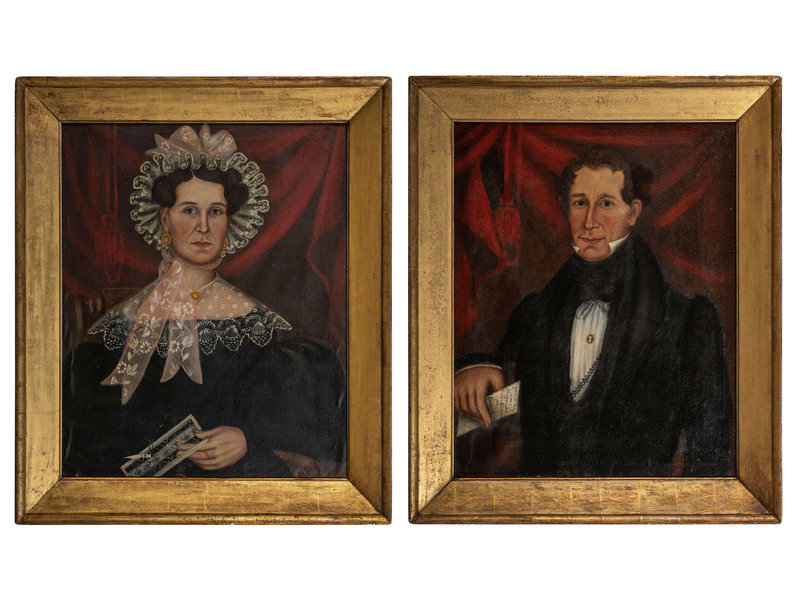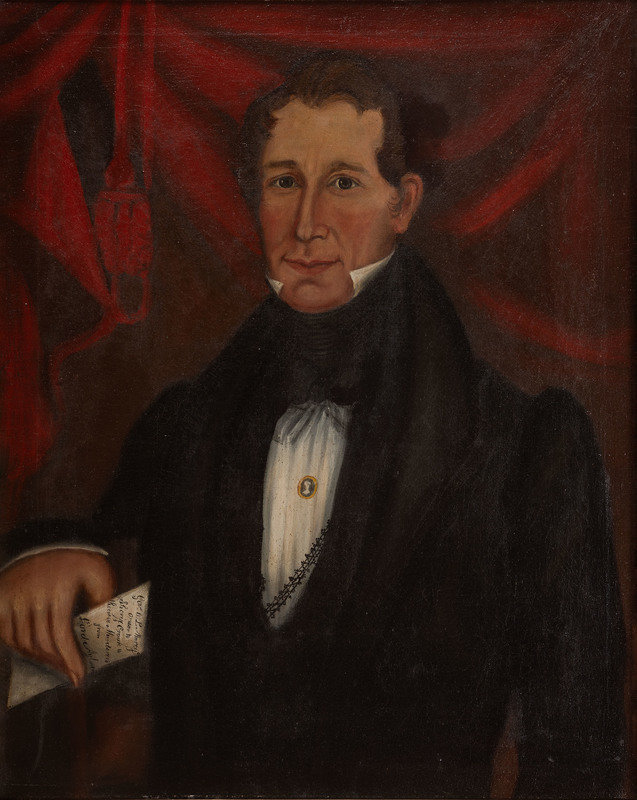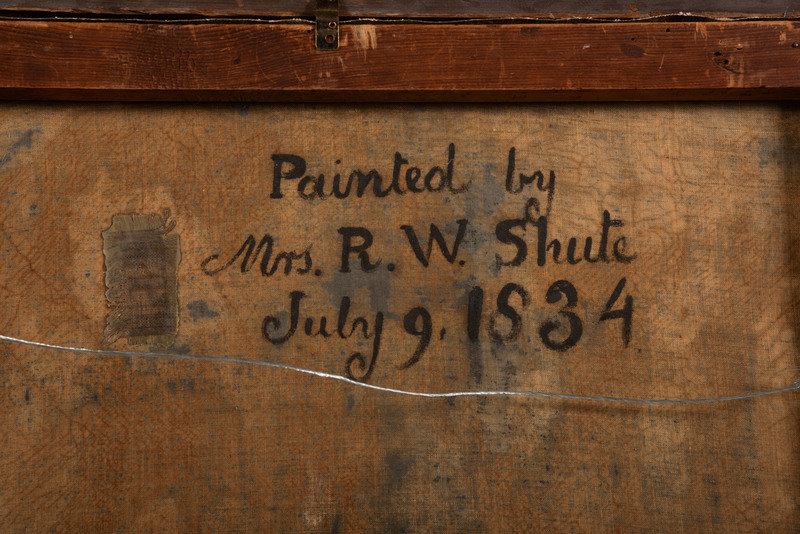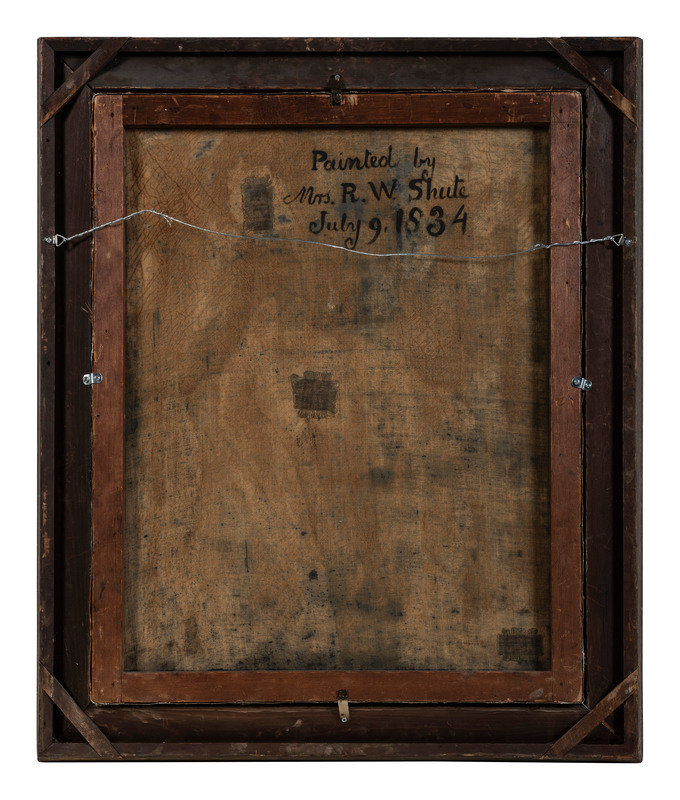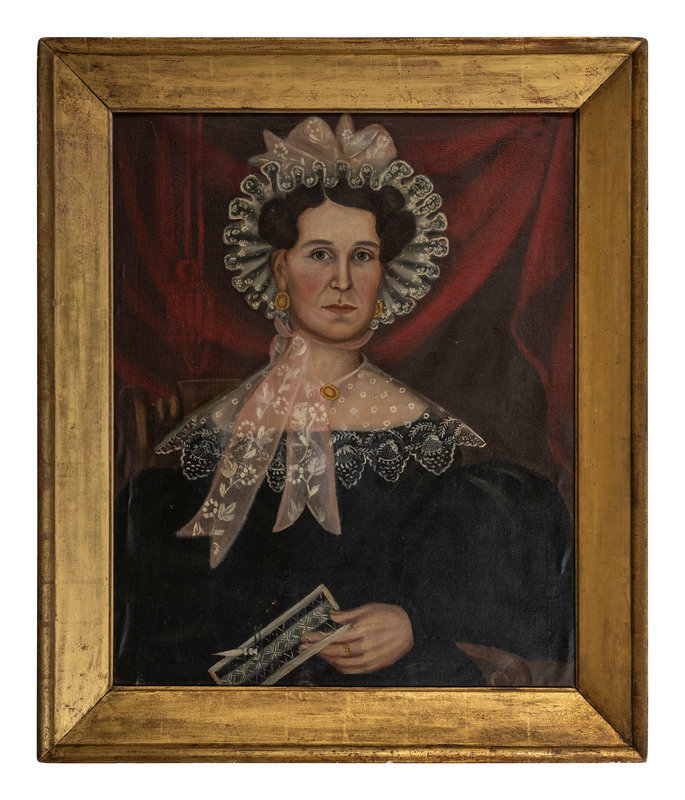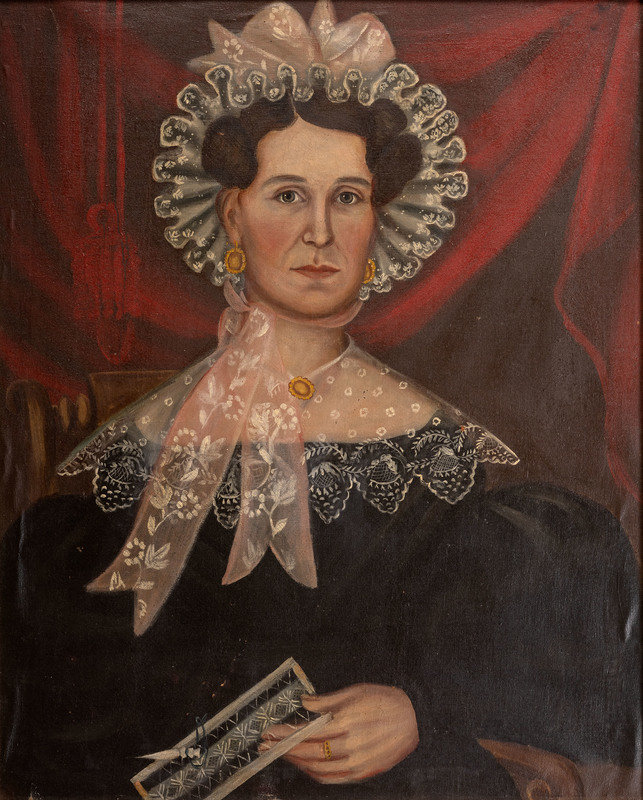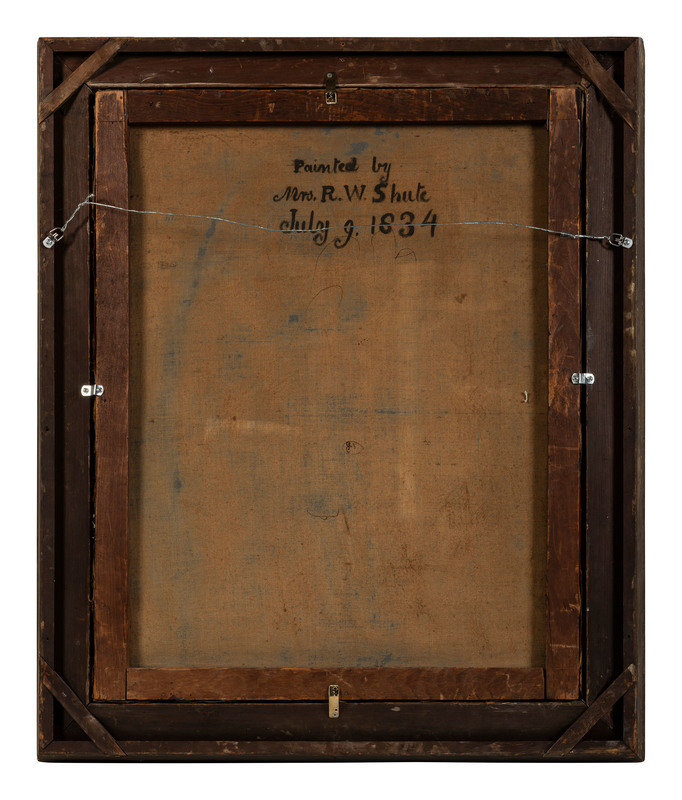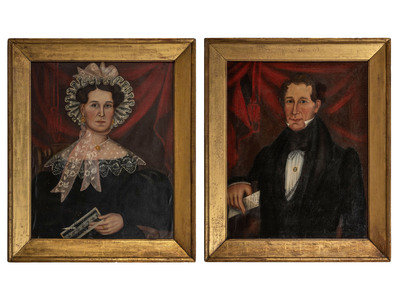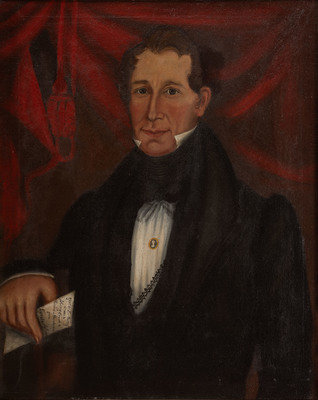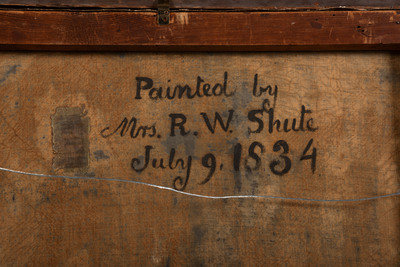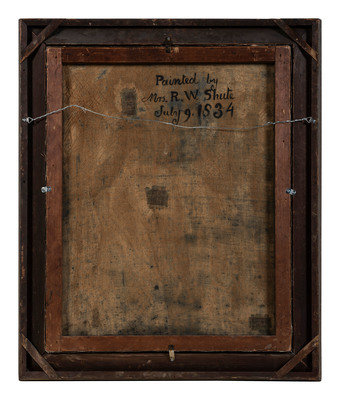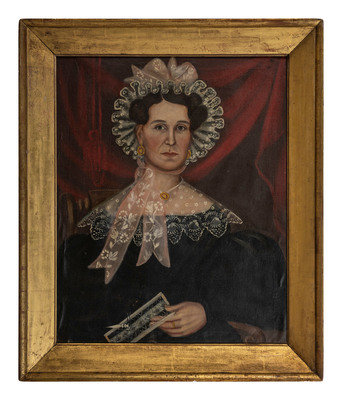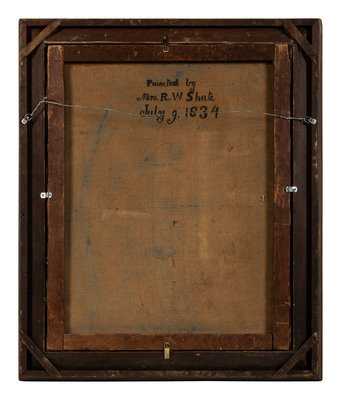oil on canvas
each signed and dated Painted by / R. W. Shute / July 9, 1834, verso
Hannah Crook pictured with an in-progress needle lacework, while Thomas Crook holds a letter reading Gov. W. L. Marcy / Order to / Sheriff Crook to / Receive Murderers / from / Lord Aylmer
29 1/2 x 23 1/2 inches.
Provenance:
Found at an estate sale in Toledo, Ohio.
Thomas Sylvanius Crook (1798-1874), the descendant of an eponymous Protestant immigrant ancestor from Ireland, continued a family legacy of public service, political influence, and entrepreneurial success. Progenitor Thomas Crook (circa 1698-1758) arrived in Casco Bay in 1718. He later settled in Nantucket and ultimately became master of a ship, traveling frequently between Boston and the Caribbean. The second generation of Crook sons received a private education in Nantucket and developed interests in farming and stock-raising. The family dispersed throughout the more unsettled regions of New England, where they remained dedicated to both the cultivation of the land and military service, with other members participating in the Revolutionary War and the War of 1812.
On May 22, 1798, Thomas Sylvanius Crook was born to James and Hannah Martin Crook in Westminster, Vermont. By the age of eight, his family had relocated to Beekmantown, Clinton County, New York, where Thomas would spend most of his adult life. As a young man, he purchased his own tract of land and became a prosperous farmer and citizen of influence. He married Hannah Elizabeth Delong (1821-1874) on March 21, 1821, and the couple had eight children together. In 1832, Crook was elected Sheriff of Clinton County, in which capacity he served until 1834. During this time, he and his family moved to the county seat of Plattsburgh, where they remained for the duration of his service in various county offices, including County Clerk of Clinton County and Deputy Collector of Customs. Later, Crook represented his district in the New York State Senate for thirteen years. Throughout his political career, he retained his farm in Beekmantown until 1870, when he moved to Rouse’s Point. Crook died there on October 3, 1879.
Crook’s tenure as Sheriff coincided with the governance of William L. Marcy (1786-1857), a lawyer and politician who was later appointed to the Cabinets of Presidents Polk, Pierce, and Buchanan. He served as Governor of New York for three terms between 1833 and 1838. Around this time, the province of Lower Canada, encompassing parts of present-day Quebec and Newfoundland, was embroiled in a political crisis concerning the conduct of its governor, Matthew Whitworth-Aylmer, 5th Baron Aylmer (1775-1850). Prior to his assumption of the role, Lord Aylmer had held no previous political office and was ill-equipped to assuage the growing unrest of his citizens, who called for reforms to the perceived “oppressions practiced by the colonial government,” including Lord Aylmer’s own exacerbation of ethnic tensions for his favoritism of the province’s English over French residents. Vocal calls for his impeachment escalated to letters promoting Lord Aylmer’s assassination that were published in various Canadian newspapers by March 1834. The “murderers” Governor Marcy instructs Crook to receive in the letter from the painting may reference the writers of these letters who were apprehended and charged with treasonous threats of violence against Lord Aylmer. The prisoners may have been sent to New York under Crook's custody to further safeguard Lord Aylmer's life.
Receiving a group of violent political prisoners would have undoubtedly been significant to Crook’s early career. When he commissioned the portraits, he perhaps chose to include the letter as a record of his assistance to Governor Marcy and Lord Aylmer during an important current event. Although the exact circumstances of the commission are unknown, Ruth Whittier Shute, recently widowed, ran a solicitation for clients seeking “to see themselves as others see them” in the Plattsburgh (New York) Republican on May 24, 1834, two months before the execution of the works offered here.
